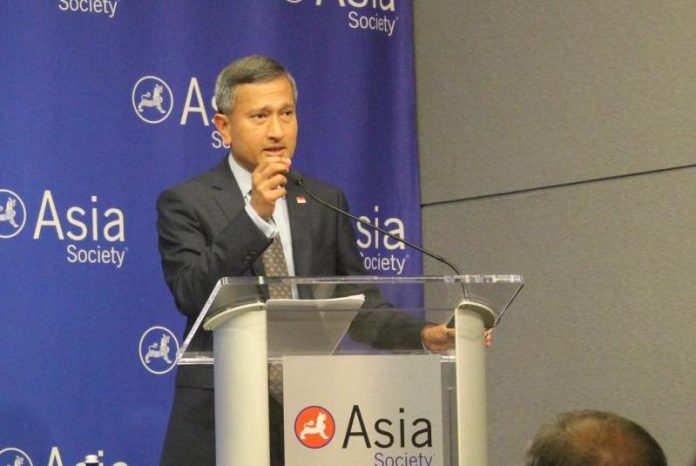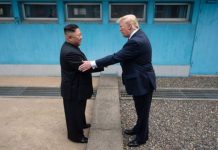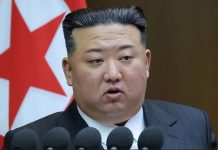
NEW YORK, Sept. 27 (UPI) — Countries in Southeast Asia are anxious about the escalating U.S.-China trade dispute that could damage their economies and fail to address the real causes of middle-class stagnation around the world, Singapore’s top diplomat said Wednesday.
Vivian Balakrishnan, who made headlines when he took a selfie with Kim Jong Un during the Singapore summit in June, said during an appearance at the Asia Society that the brewing trade war between the two of the world’s largest economies is a serious issue.
“Any trade war is a source of great concern for us because by reducing the volume of trade or simply enhancing the risks associated with trade erodes the value for hubs like Singapore,” Balakrishnan said. “We hope cool heads prevail.”
The Singaporean foreign minister, who is attending the United Nations General Assembly, said ASEAN countries, with a combined GDP of $2.4 trillion, depend on the United States and China to be on good terms.
“We are one of the chief beneficiaries of a world where the United States and China get along, trade with one another, allow investments to flow between them,” he said, adding Singapore supports multilateral trade agreements, like the Trans Pacific Partnership, from which the United States withdrew in 2017.
“We were disappointed when America pulled out…[but] we left the door wide open for America,” Balakrishnan said. “I hope after a period of time we’ll see value in this multilateral trade pact.”
U.S.-China dispute hurts ASEAN
Chief among the foreign minister’s concerns is the possibility the trade war and political disputes between the United States and China could create discord with countries like Singapore that have a stake in maintaining healthy ties with both sides.
“China is our largest trading partner, so whether you like it or not, that’s a major account. China is an investing and trading partner and has a strategic interest in Southeast Asia.
“If the United States and China do not just have a competitive relationship but a dysfunctional relationship, history shows superpowers tend to translate those dysfunctional relationships into proxy wars that divide interests,” the foreign minister said. “That’s not what we want.”
Devin Stewart, a senior fellow and director at the Carnegie Council in New York, told UPI Singapore’s integration into the regional economy would be affected by the trade war.
“If the United States imposes tariffs on imports from China, Singapore could get hurt in at least two ways: One is Singaporean industries that use China as part of its supply chain or final assembly end up being the target of U.S. tariffs inadvertently,” Steward said in an email on Thursday. “The other is that U.S. tariffs could dent Chinese economic growth and add uncertainty to Asian economies.
“If that happens, a drop in demand from the Chinese market could also harm Singaporean growth.”
Preparing for future challenges
Growth is a chief concern in the city-state, Balakrishnan said, and potential economic stagnation is being addressed through education that will retrain Singaporeans and prepare them for the dramatic changes that will accompany artificial intelligence and robotics.
“Southeast Asia is acutely aware there is a digital revolution, and we need to get up the ladder,” the foreign minister said, adding Singapore is “obsessed” with restructuring its education system, including retraining for adults.
“We need to train for new jobs, rather than compete for old jobs, because that is the route to middle-class stagnation,” he added, referring to cases where Singapore is working to harness future changes in technology, rather than bracing for a potential loss of jobs to robots and machines.
Stewart said the digital or Fourth Industrial Revolution is one of the greatest challenges in the United States, where workers could be vulnerable to advances in technology.
“The proliferation of robots and artificial intelligence, will probably require a much more robust social welfare system — whether that means universal basic income or something else,” the analyst said. “In the United States, that reality is creating a political debate on both sides of the political spectrum that is running up against a more liberal, laissez-faire point of view. This tension will likely shape the future of U.S. politics.”
Stewart also said the administration’s “Trump Doctrine” is being deployed in its “Indo-Pacific strategy” in relations with Southeast Asia.
“That approach translates into approaching each state relationship as a one-on-one bilateral bargain, creating a web of bilateral relationships — rather than America’s former ‘hub and spoke’ strategy in the Pacific,” Stewart said. “Trump tries to maximize U.S. interests with intense bargaining — whether it’s on nuclear weapons with North Korea or trade access with China or Japan.”
The doctrine may already be applied in U.S. policy toward Pyongyang.
“Trump turned U.S. policy toward North Korea upside down by starting with talks among the two heads of state and then asking their teams to figure out the details afterward,” the analyst said.
Trump recently agreed to hold a second summit with Kim Jong Un.





